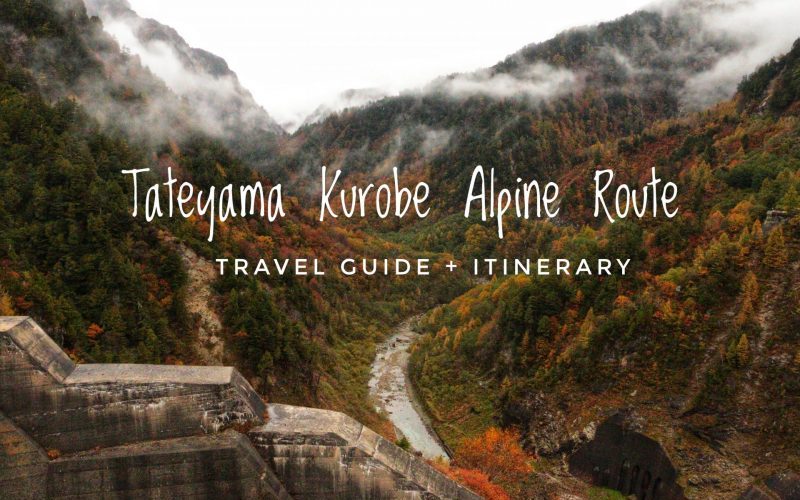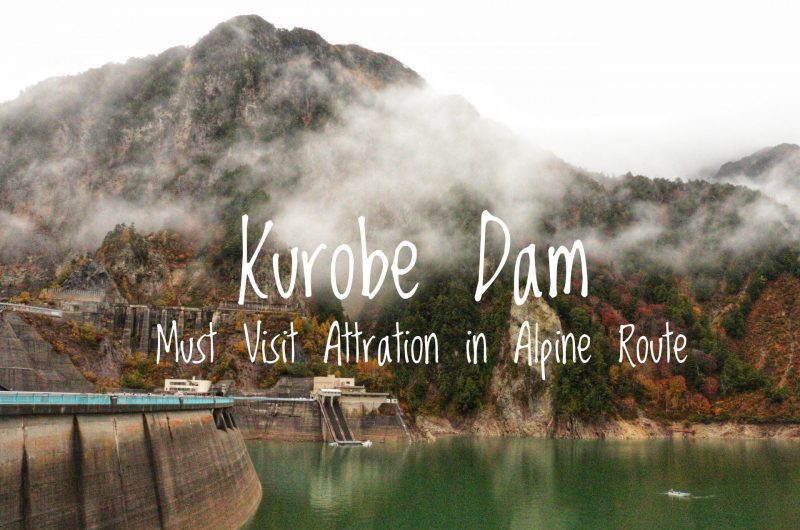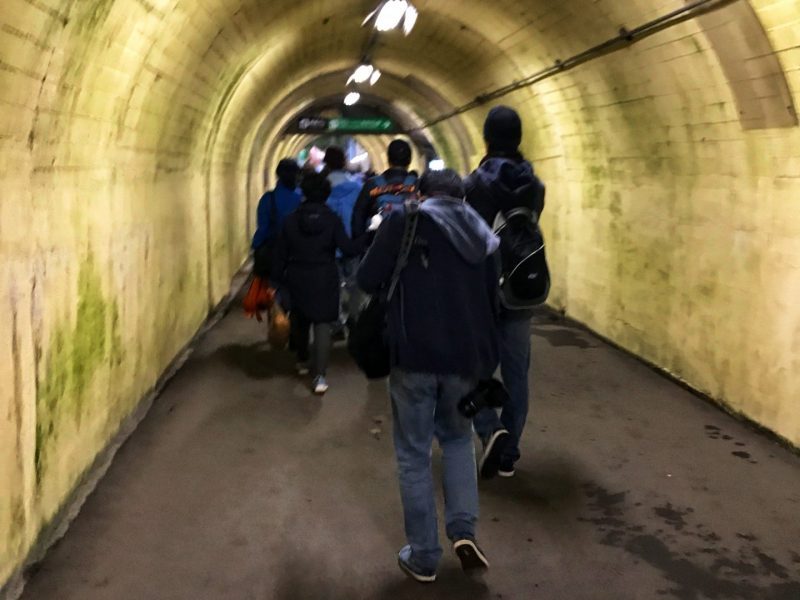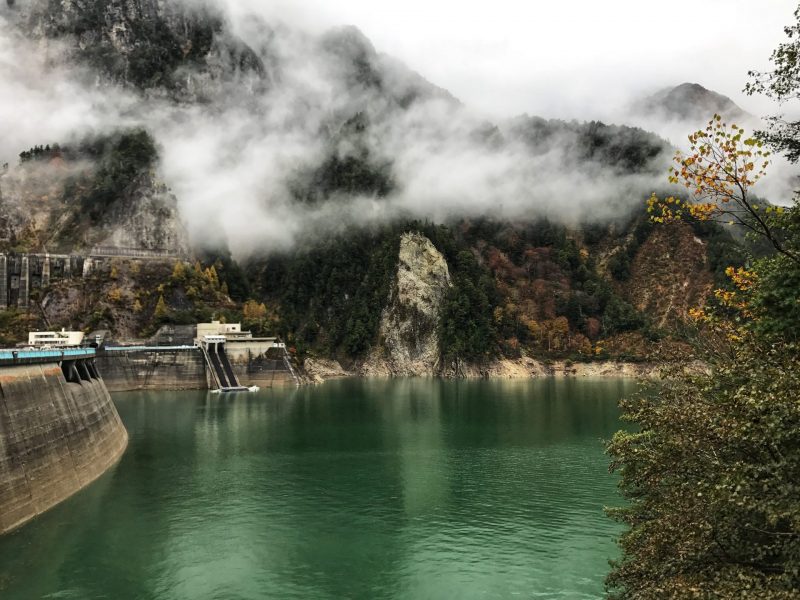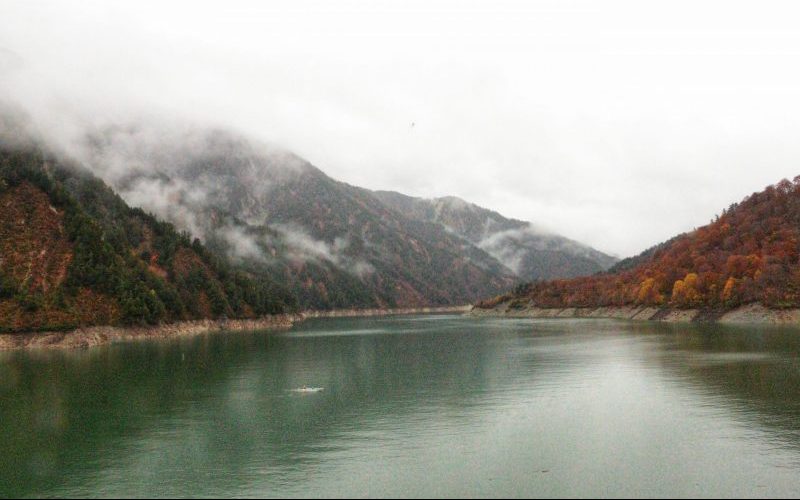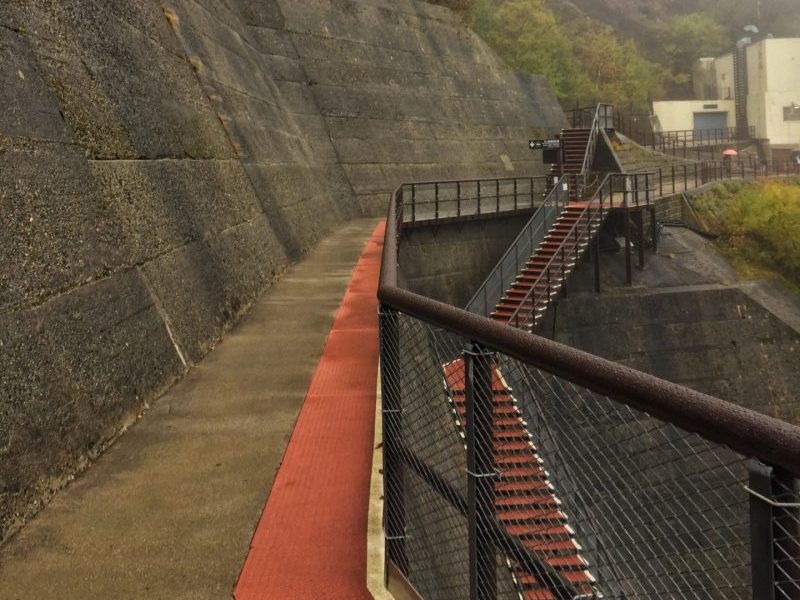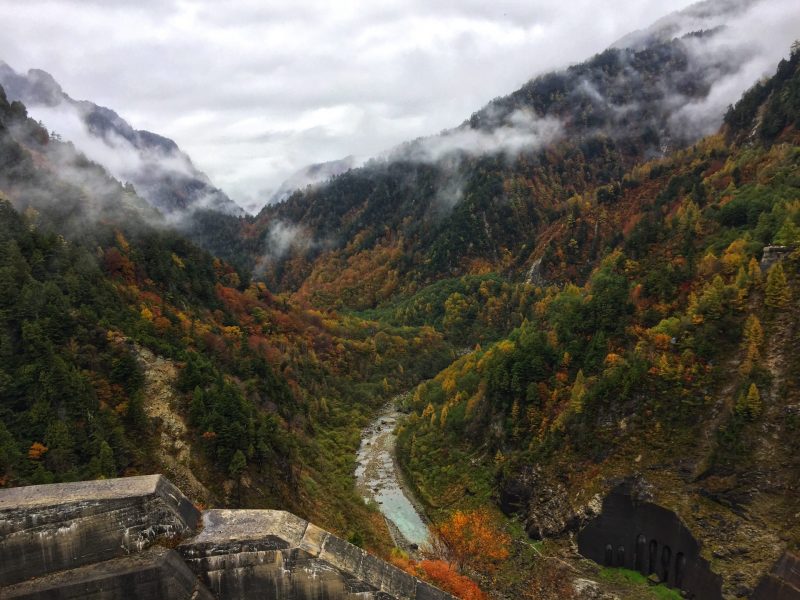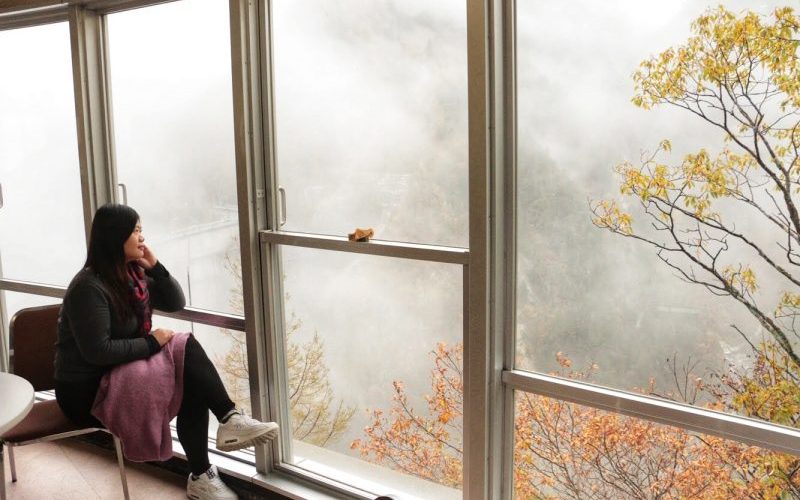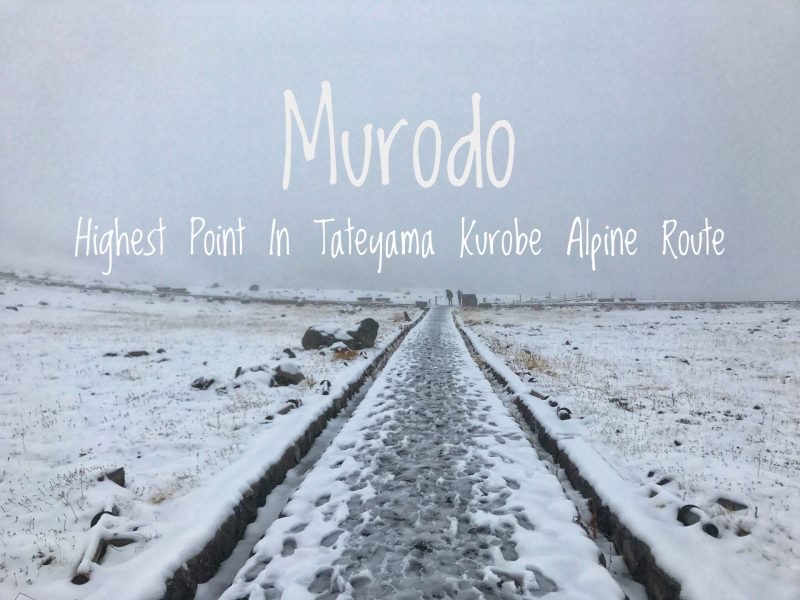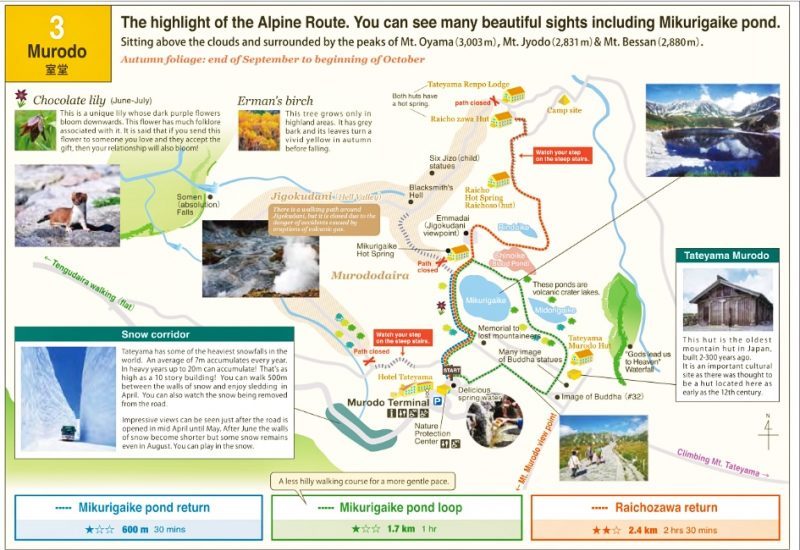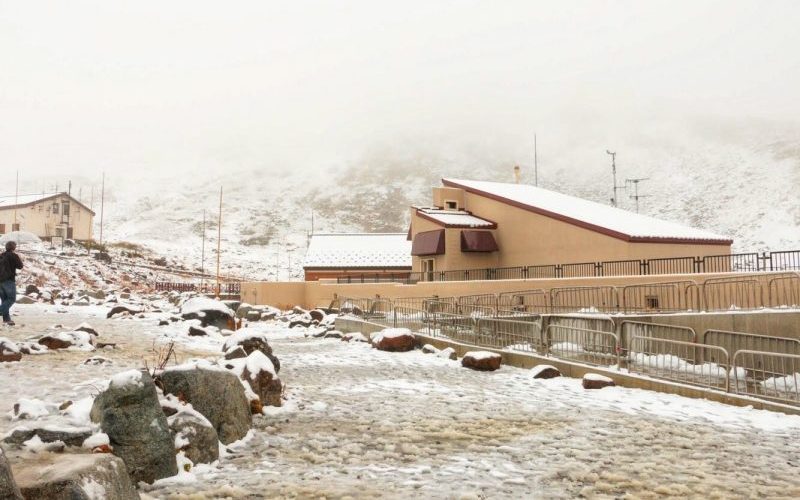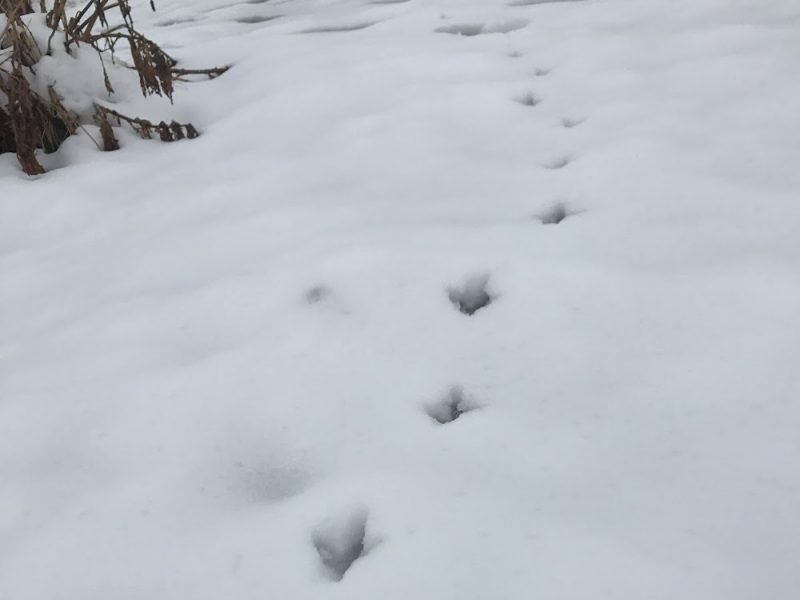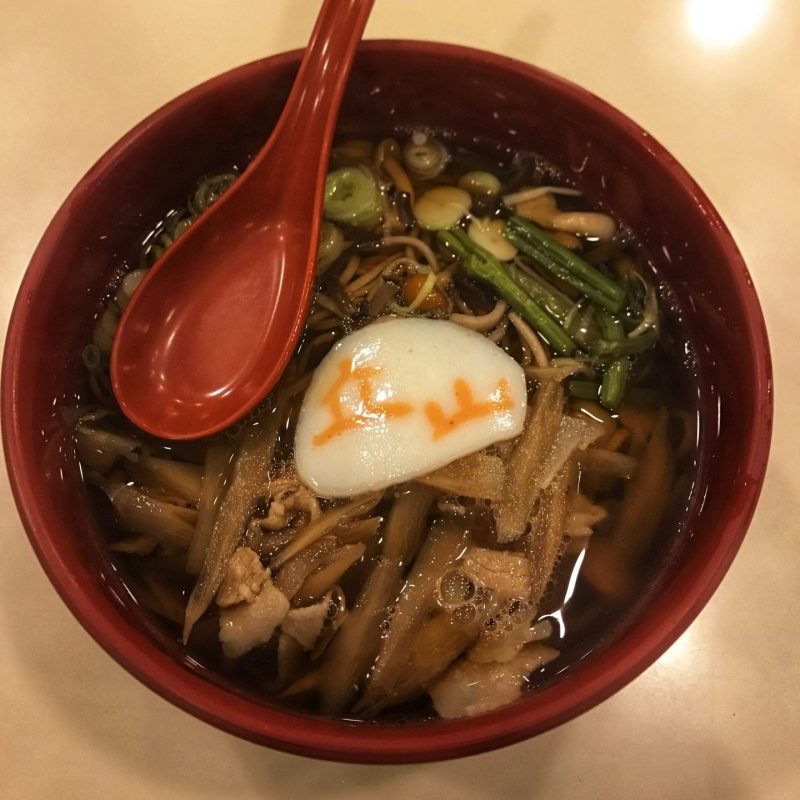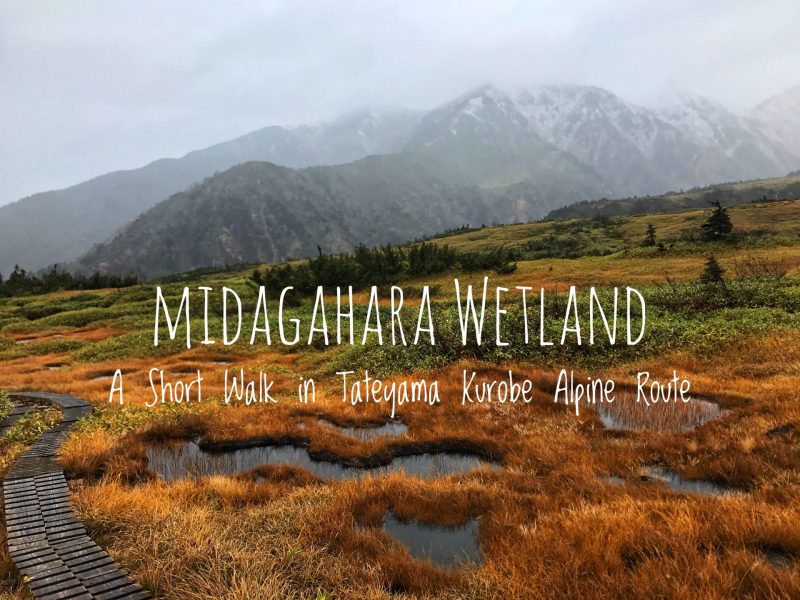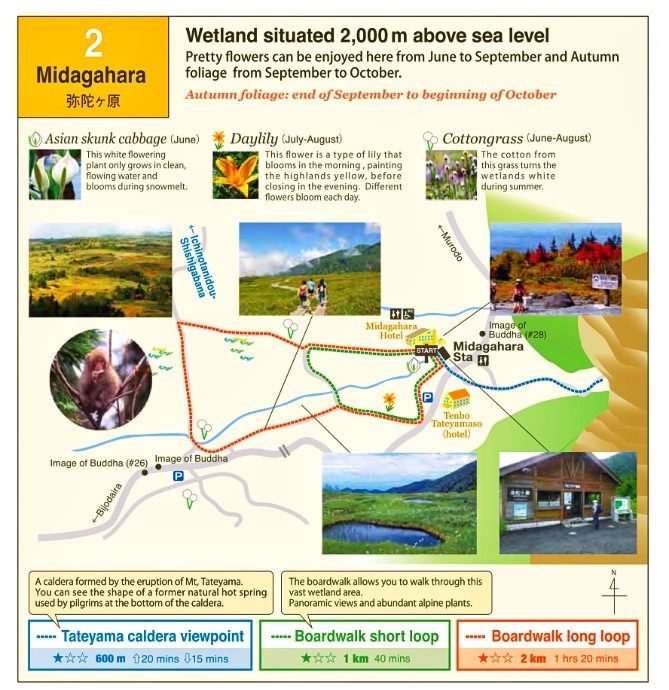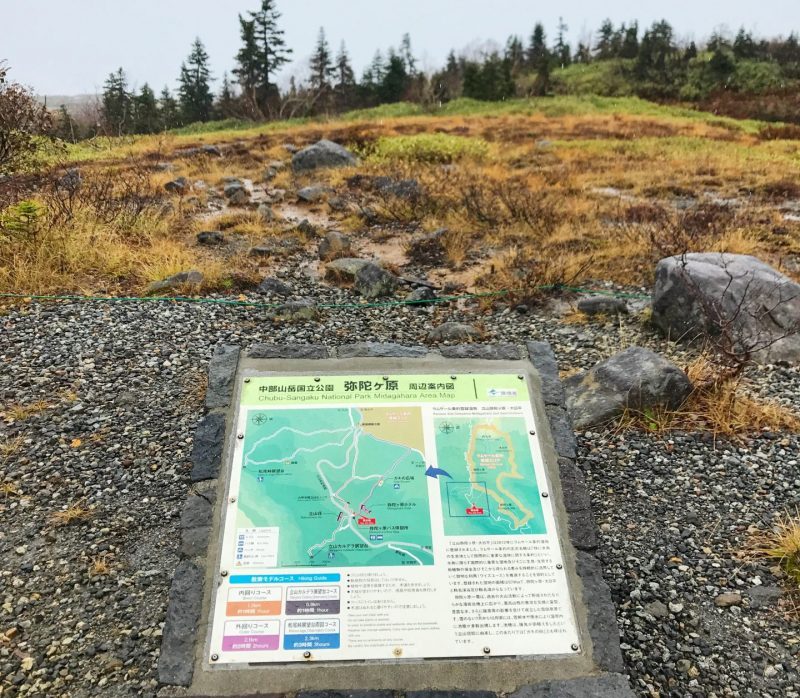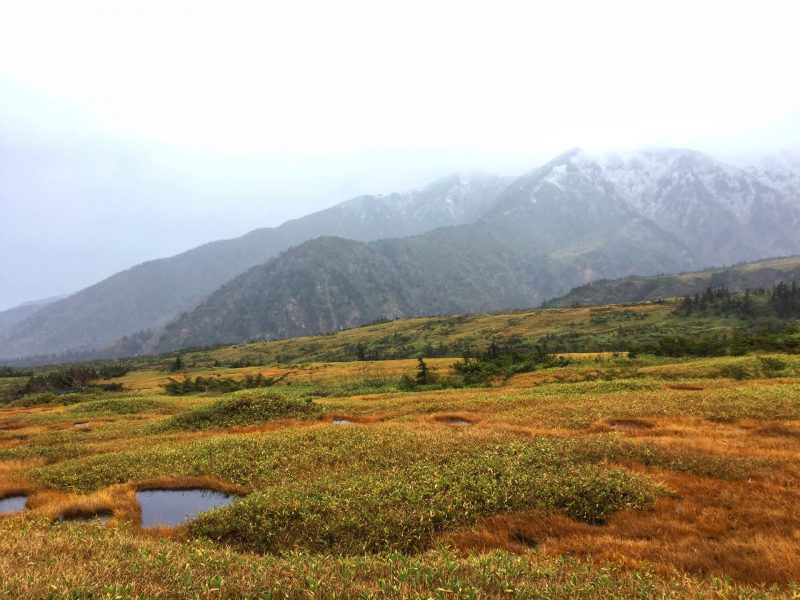Last updated on November 24th, 2024
Here’s a detailed Tateyama Kurobe Alpine Route itinerary and travel guide blog with budget breakdown. Enjoy the spectacular Japan Alpine Alps in the Chubu region.
The Tateyama Kurobe Alpine Route or Tateyama Kurobe Alpen Route (Arupen Ruto, 立山黒部アルペンルート) is a popular day trip travel in Chubu region. It is renowned for its incredibly stunning mountain sightseeing route through the Northern Japan Alps. This unique and spectacular route is a MUST VISIT in the Chubu region.
Completed in 1971, this 90 km route is commonly referred to as the “Roof of Japan”. It connects Toyama City in Toyama Prefecture and Omachi Town in Nagano Prefecture with various means of transportation. The total use of transportation involved up to nine types for a full route. However, don’t be worry too much on the transportation arrangement. It is relatively straightforward and well connected throughout the journey.
We visited Tateyama Kurobe Alpine Route during the end of October. Our initial plan was up to mesmerize the stunning autumn colors leaves for fall foliage. But we were so lucky and welcome by the new snow in Murodo. Such an incredible and unique activities to see both autumn and winter scenery in one day.
Here, we will showcase what you can do on your trip to Tateyama Kurobe Alpine Route from Toyama and ending up in Matsumoto. This is our actual itinerary and we did along the journey. I hope this will greatly help with your Tateyama Kurobe Alpine Route itinerary planning.
While this is a Complete Tateyama Kurobe Alpine Route Travel Guide Blog, feel free to read on each season’s highlight on below travel blog:
Best Time To Visit
Tateyama Kurobe Alpine Route is famous for its magnificent mountainous scenery. It is part of the Chubu Sangaku National Park and passes through the dynamic scenery of Mt. Tateyama in the Japan Alps. Visitors can enjoy the majestic view during different seasons of the year when it is open. Each season the Tateyama-Kurobe Alpine Route shows off its unique characters and spectacular views of the scenic beauty.
Tateyama Kurobe Alpine Route during Winter (December to early April)
Please take note the Tateyama Kurobe Alpine Route will be completely close and inaccessible during winter. The opening dates for the Alpine Route Tateyama Kurobe is normally mid of April. Please refer to the official website. (https://www.alpen-route.com/)
In 2024, the opening date of Tateyama Kurobe Alpine is from 15th April until 30th November 2024.
Spring – Summer – Autumn
Tateyama Kurobe Alpine Route during Spring (April, May, June)
The whole mountain range of Alpine route is covered in snow. One of the best things to do in Tateyama Kurobe Alpine Route during Spring is walk through the majestic snow corridor. This is an impressive snow wall on Murodo when it opens in mid-April. The pedestrian walk is open and started to melted until completely gone in July.
Beautiful alpine flower started to bloom around June with the lush green mountain range. You will still possible to see the snow wall and play around with snow if you’re visiting Alpine route during this time.
Tateyama Kurobe Alpine Route during Summer (July, August)
Summer attracts visitors with its beautiful landscape. It is the best season for outdoor activities such as hiking and sightseeing. The temperatures are pleasantly comfortable during this time. There are plenty of easy trails around the Mikurigaike pond at Murodo. You can even go for a challenging hike and climb the summit of Mount Tateyama.
Tateyama Kurobe Alpine Route during Autumn (September, October, November)
The Tateyama Route is the best place for the season’s foliage in the Chubu region. Started from September, leaves slowly turn its color from green to yellow and red, start at the highest elevation. It takes about six to seven weeks to change the mountain slope into stunning colors. The peak season for fall foliage is during late September at around Murodo and Daikanbo.
During November, you are possible to view the vibrant colors of autumn foliage in the middle route but white snow-covered mountain when reach at top.
How To Get To Tateyama Kurobe Alpine Route
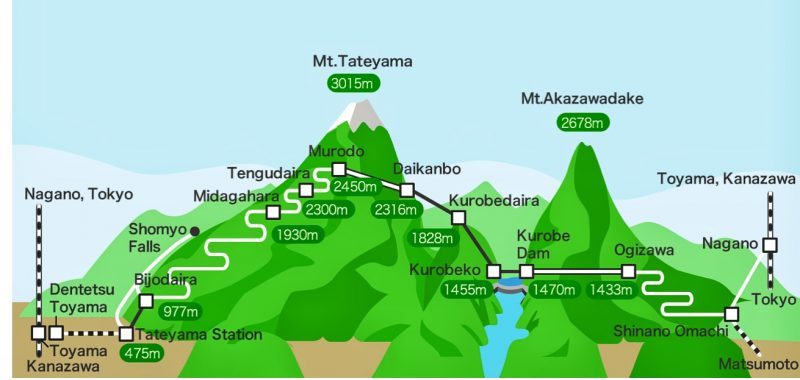
Depend on where is your departure place. You can choose to start from Nagano/Matsumoto or Toyama. While it’s a one-way route, that means that if you start from one, you’ll end at the other. Round trip is doable but it cost more on transportation. Many foreign visitors choose to spend one day in Tateyama Kurobe Alpine Route when traveling from Tokyo of the Kanto region to Osaka, Kyoto in the Kansai region. The Alpine Route can be done within one day in quick travel pace.
However, we highly suggest staying overnight near the Alpine Route for more leisure experience. The full route of the Tateyama Kurobe Alpine trip required at least 6 hours. You can be easily extended your itinerary to nearby popular destinations such as Kanazawa, Takayama, Toyama, and Matsumoto. The Alpine Route can be done in either direction. Toyama city is your start place if you choose from west to eastbound (Dentetsu Toyama to Shinano Omachi).
From Tokyo to Toyama city, ride the JR Hokuriku Shinkansen for about 2 hours. Your ride is FREE if you have a JR Pass. This pass will be covered for all the JR ride within the validity period. If your Japan trip is covered Tokyo, Kyoto or even Hokkaido, this pass definitely worth the money. This is the best transport pass for foreign visitors when visiting around Japan. You have to ordered and get the exchange order before arrival. Your exchange order can be redeemed to JR Pass at JR Office in Japan. (Detail on prices and information on JR Pass)
However, please take note that this pass does not covered the Tateyama Kurobe Alpine Route. You need to purchase the additional Tateyama Kurobe Option Ticket. Highly recommended to get this option ticket to save yourself the headache.
Money-Saving Transport Pass
Alternatively, we suggest you get the 5 Day JR Alpine-Takayama-Matsumoto Area Pass at ¥23,800. This Tourist Pass will give you unlimited ride between Nagoya to Toyama, as well as unlimited use on all transportation within the Tateyama Kurobe Alpine Route for 5 days. This is a perfect pass if you plan to explore the Chubu region and Alpine Route. The full route transport fee on Alpine route already costs you more than ¥15,000.
However, Alpine-Takayama-Matsumoto Area Tourist Pass is only valid for 5 days. We plan to stay longer in Takayama to participant in the Dokubori Matsuri festival. So we look for an alternative solution. The Alpine Route Pass (立山黒部アルペンきっぷ ) is similar to Alpine-Takayama-Matsumoto Area Tourist Pass but it has longer duration up to 8 days. There is some limitation of this pass. I will explain on this pass in the next travel post later.
During my Chubu Japan travel, we fully utilized the Alpine Route Pass to visited nearby popular attractions such as Tayama, Nagoya, and Kanazawa. It greatly saves on my transportation fee when traveling around the prefecture. The detail on my Chubu Travel Itinerary here.
Alpine Route Tours
Joining the Alpine Route Tours is another great option if you prefer for hassle-free travel. Many travel agencies are organized the Alpine Route Tour. You can travel conveniently without worry about transportation and ticketing processes. English speaking guides will explain the history and guide you to the best sight along the journey.
If you need more info about the Alpine Route Tour, take a look at the Klook Activities here:
- Tateyama Kurobe Alpine Route Day Tour from Nagano
- 2D1N Tateyama Kurobe Alpine Route and Snow Wall Tour from Tokyo
One Day Tateyama Kurobe Alpine Route Itinerary
Many locals and visitors will plan on 2 or 3 days itinerary through the Tateyama Kurobe Alpine Route. There are various hiking and sightseeing activities can be done to explore the spectacular vista of Tateyama Mountain Range. But it is relatively straightforward to explore the Tateyama Kurobe Alpine route even within one day.
We did the Tateyama Kurobe Alpine Route from west to east in 1-day trip. Our Tateyama Kurobe Alpine route itinerary started from Dentetsu Toyama from the early morning. At the end of the day, we rest our heads in Matsumoto. The whole journey took about 9 hours. So please make sure to start early and well plan on the itinerary.
The Complete Tateyama Kurobe Alpine Route itinerary:
- Start the Alpine Route from Dentetsu-Toyama To Tateyama Station (60 minutes).
- Take the Cable car from Tateyama Station to Bijodaira (7 minutes).
- Tateyama Togen Highland Bus from Bijodaira to Murodo (50 minutes). Optional, take a short Hike at Midagahara Wetland.
- At Murodo Station, take a short stroll to Mikurigaike Pond and wandering around.
- Trolleybus from Murodo to Daikanbo station (10 min).
- Ride the Ropeway from Daikanbo to Kurobedaira (7 min).
- Cable car from Kurobedaira to Kurobe Dam (5 min).
- Wandering around in Kurobe Dam.
- Trolleybus from Kurobe Dam to Ogizawa (16 min).
- Bus from Ogizawa to Shinano-Omachi (40 min).
- Take the train from Shinano-Omachi to Matsumoto.
Sound confusing? Read through the below explanation and you’ll find out it is very easy to plan on the Tateyama Kurobe Alpine Route itinerary.
Start From Dentetsu-Toyama To Tateyama Station
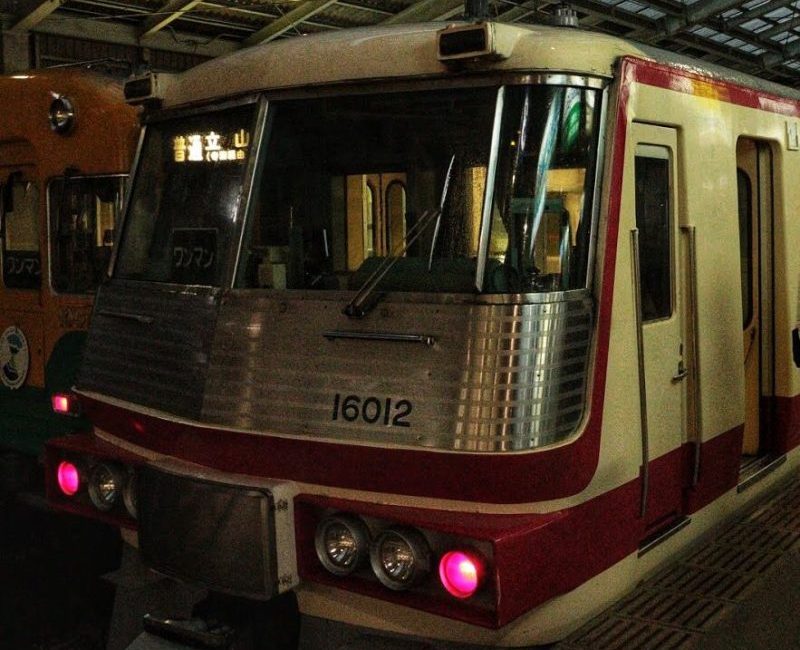
We reached Toyama city and stayed in the Comfort Hotel Toyama one day before our Tateyama Kurobe Alpine Route started. It located less than 3 minutes walk to the Dentetsu-Toyama station (next to JR Toyama Station). The strategic location is very ideal as we need to depart from Toyama early. Most importantly, it also help to arrange our luggage bags to our hotel at Matsumoto.
We woke up in the early morning and check-out from the hotel. From Dentetsu-Toyama Station, we ride the Chitetsu Line and get off at Tateyama Station (1 hour). It is the start point of the Tateyama Kurobe Alpine Route.
At Tateyama station, we exchange the Tateyama Kurobe Alpine Route Pass. This pass will cover my whole transport service within the Alpine route.
Bijodaira
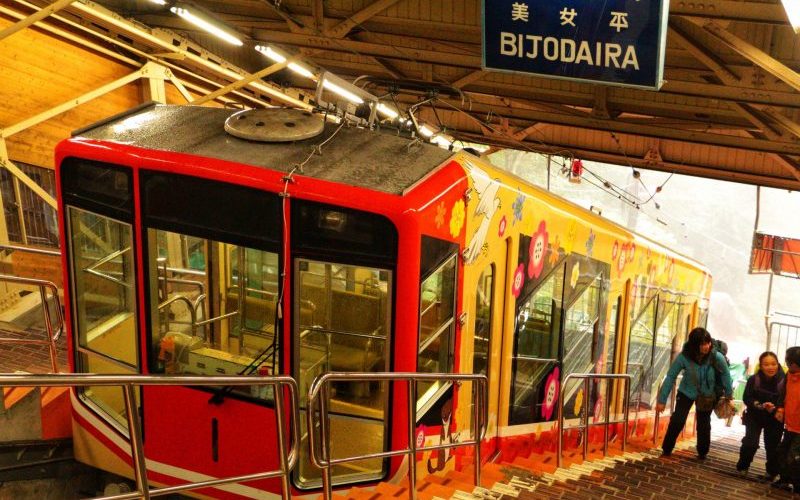
We didn’t spend much time at Tateyama Station. Once after exchange the pass, we waited for the cable car ascend from Tateyama station to Bijodaira station. The 7 minutes ride cost 720 yen for one way fare without the pass.
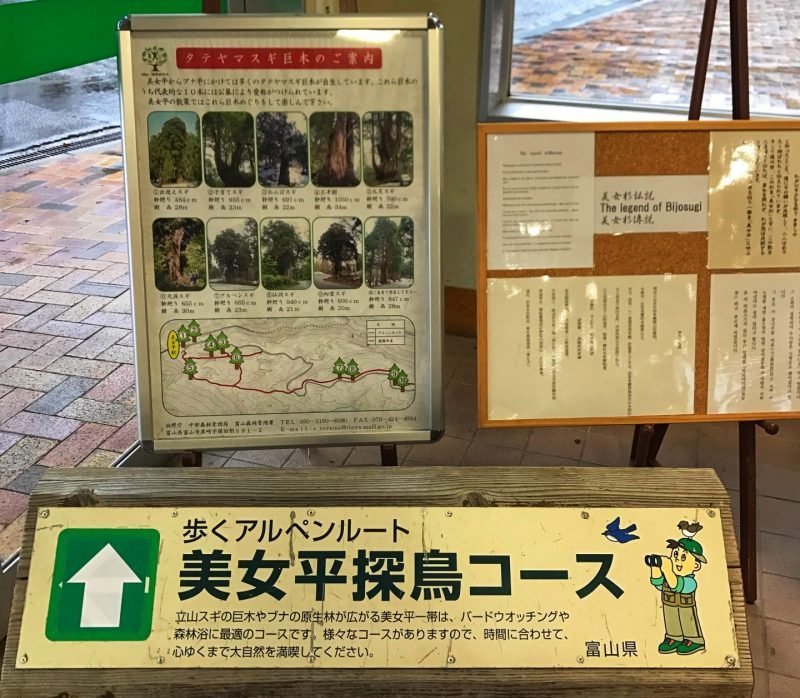
Bijodaira is the best place for Tateyama cedar viewing or bird watching. The legendary and gigantic beautiful woman Cedar can be found in Bijodaira. You can spend some time strolling in the virgin forest. However, we spent no time in Bijodaira and proceed to wait for the bus to our next hiking destination.
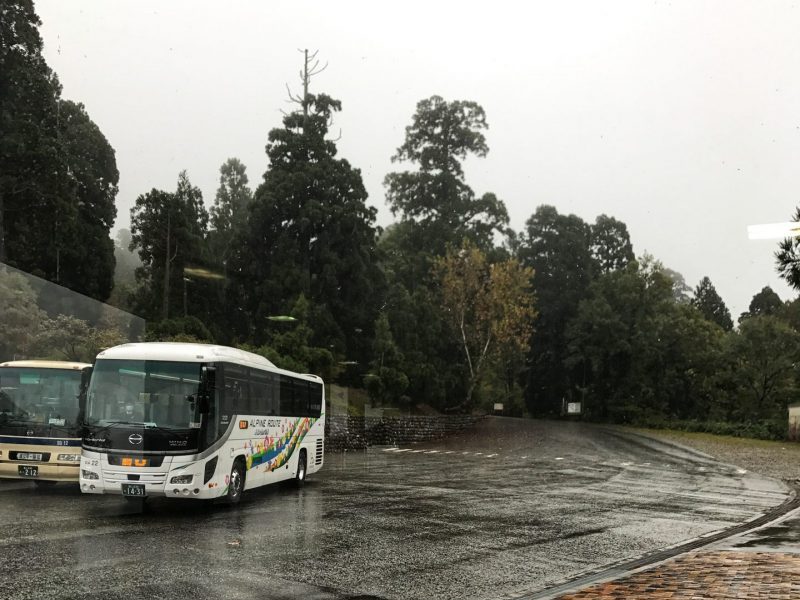
Tateyama Togen Highland Bus runs between Bijodaira Station and Murodo. There are few stops along the way, including the Midagahara Wetlands and Tateyama Snow Corridor (spring). Approximately one kilometer of spectacular Snow Wall is open to pedestrian from mid of April until June.
We choose to have a short walk in Midagahara Wetlands. Please take note, different waiting lines for buses to Murodo and Midagahara: go-direct or stop midpoint.
Midagahara Wetlands
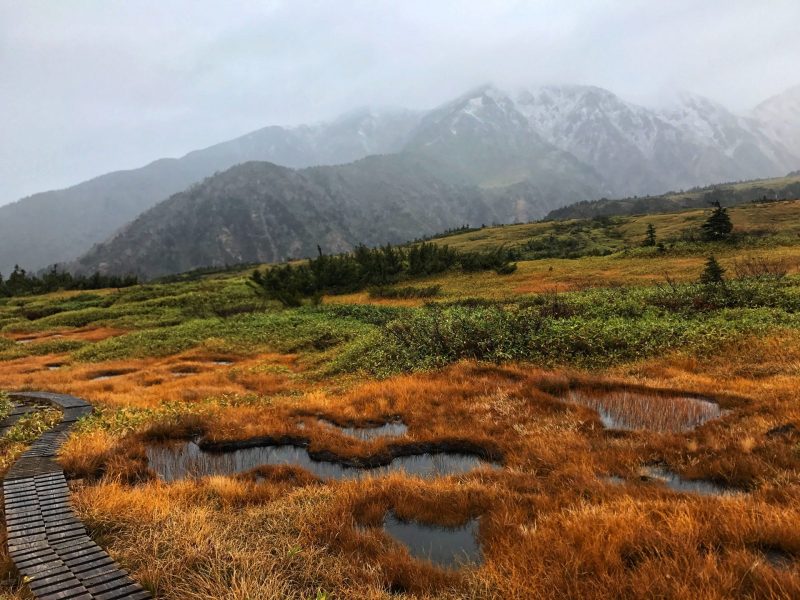
The Midagahara (弥陀ヶ原) is a popular hiking spot for its natural scenery in Tateyama Kurobe Alpine Route. It is one of the largest alpine wetlands in Japan which lies at an altitude of 1900 m.
Friendly reminder: Please book your next departure bus at Midagahara Bus Stop when get down from Tateyama Tagen Highway Bus.
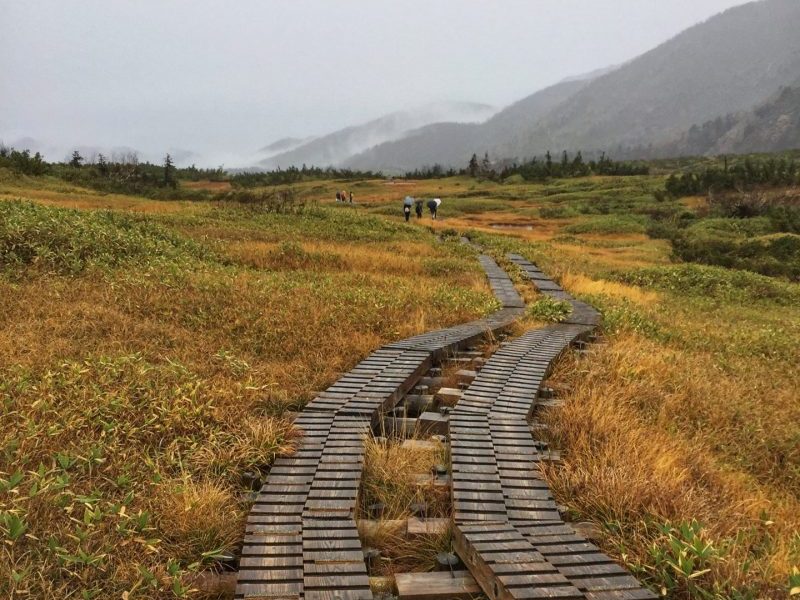
There are two loop walking trail and another one trail lead to Tateyama caldera viewpoint. We choose the short loop to walk through the vast wetland area. Wooden boardwalks were built to protect the wetland environment. The 1-km trail took us less than one hour to complete.
Related travel post: A Short Walk in Midagahara Wetland
Murodo: Highest Point in Alpine Route
Next, we boarded the coming highway bus on time and continue to Murodo. Gosh!!! Out of sudden, the scenery was changed from Autumn leaves into snowy white after one turn. We understand the weather can be very cold at the summit. But we did not expect winter snow during October.
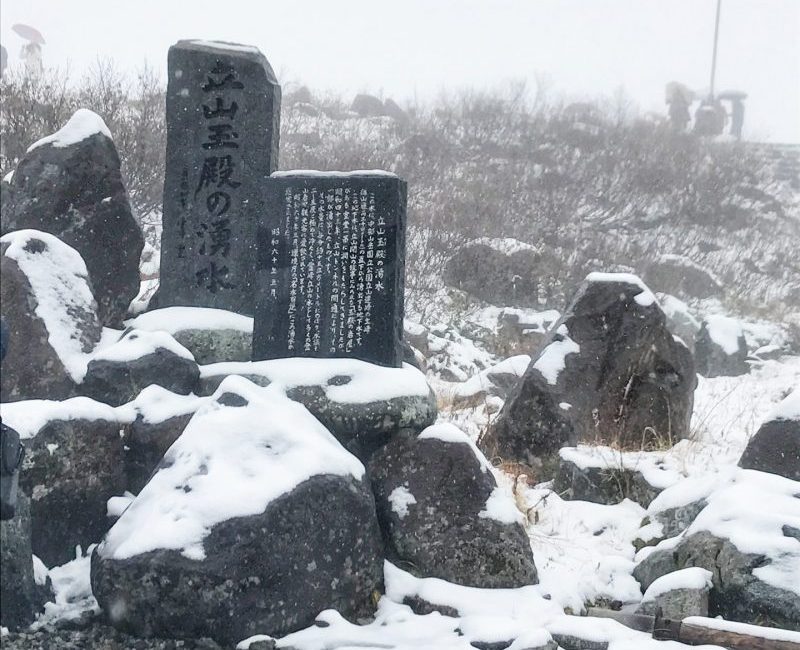
Again, we were surprised by the cold weather. Murodo has recently received first snow probably a few days ago. It turns the area into a winter wonderland. Although we miss the chance to view the vibrant colors of fall foliage. The view in Murodo covered with snow was still very breathtaking.
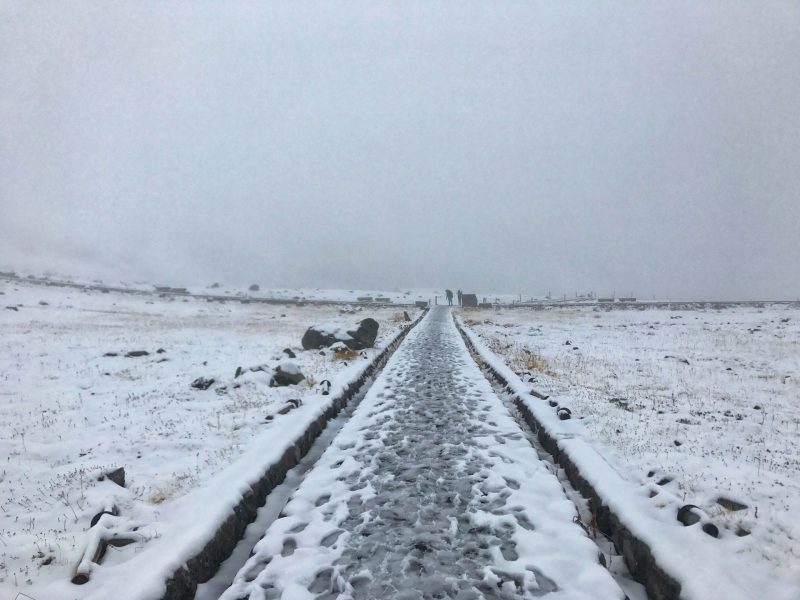
We took the short stroll to Mikurigaike Pond and had some great time there. The weather was so cold outside and we decided to get the hot udon soup when back to Murodo station. The price was slightly expensive but reasonable at this popular tourist spot.
Continue Read: Murodo, Highest Point in Tateyama Kurobe Alpine Route
From Murodo To Daikanbo
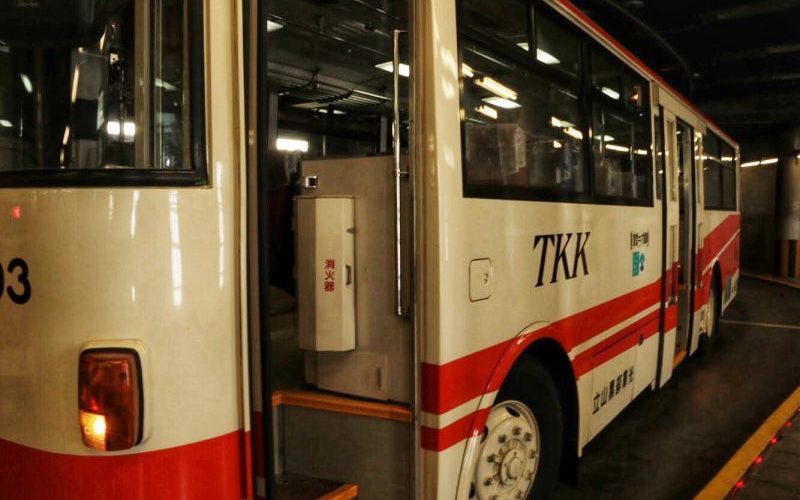
Next, we proceed to the Daikanbo with Trolleybus. It is an electric-powered buses transport travelers between Muroko to Daikanbo through the Mt Tateyama tunnel. The journey took about 10 minutes.
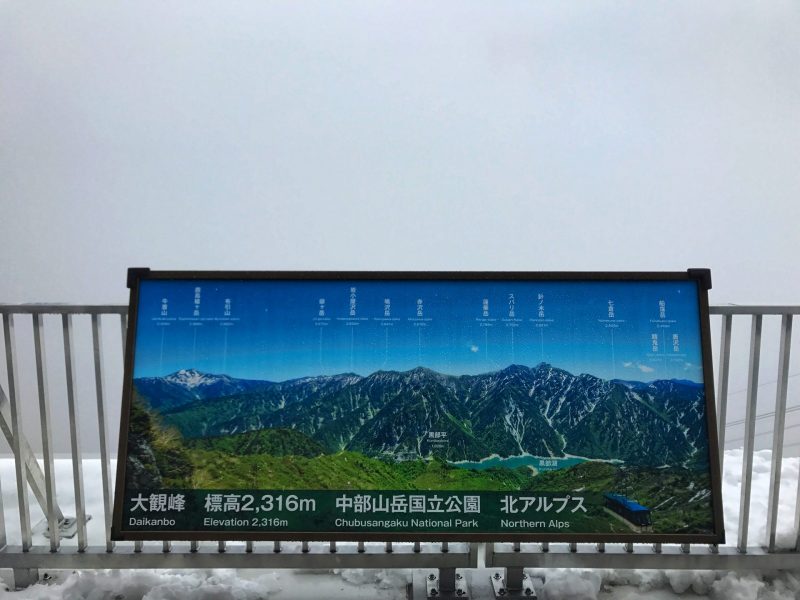
Daikanbo is a transfer station between the Tateyama Trolley Bus and the Tateyama Ropeway. This small station has an observation deck with great views of the mountains. But too bad, the fog was too thick and we couldn’t see anything from there. It much be very breathtaking when the sky is clear. We didn’t spend so much time in Daikanbo station and decided to proceed for the next destination by ropeway.
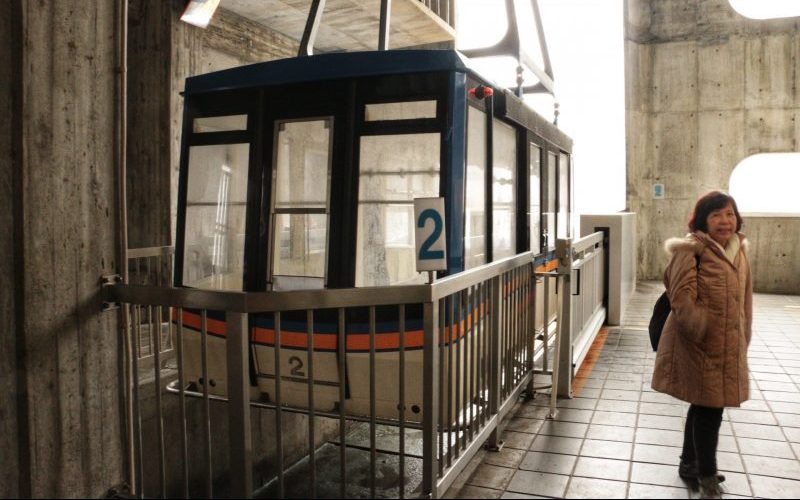
From Daikanbo to Kurobedaira, the ropeway ride provide 360-degree view on all side. This 1.7-kilometer-long ropeway is Japan’s longest one-span ropeway. It operate without any support between lower and lower and upper station. The 7 minutes ropeway ride will bring you to see the grand panoramic sights along the journey. Further down to lower elevation, the view started to change from snowy white into autumn foliage.
Take note, this ropeway ride is where you’ll usually encounter a bottleneck due to the limited number of passenger can be accommodating in one ride. So, normally it is long queues but line clear pretty fast. But expected longer waiting time during the Snow Wall Opening period.
Kurobedaira
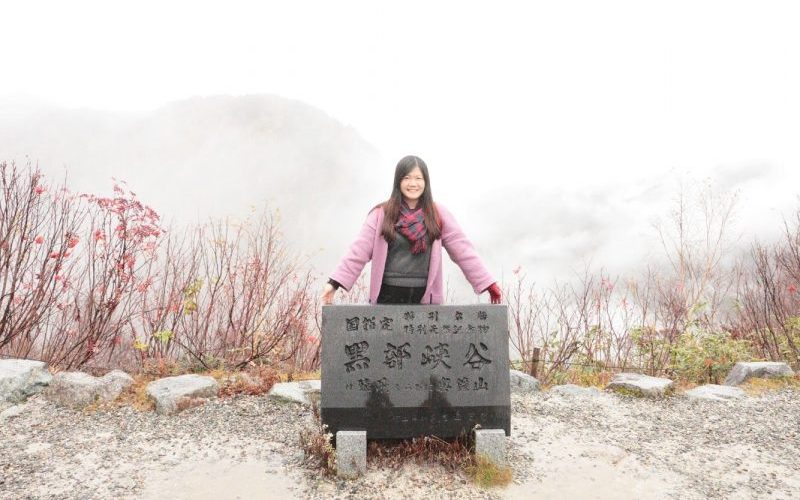
The Kurobedaira (1828 m above sea level) is the transfer station between the Tateyama Ropeway and Kurobe Cablecar. After a few rounds of transfer, we decided to have some rest at Kurodebaira station.
Although there was still thick fog around, but the surrounding mountain scenery was very breathtaking. We took a lot of beautiful photos with the stunning Japanese Alps. The weather was still cold but much better at the Muroko.
Kurobedaira station also offers restaurants and souvenir shop for travelers. One of the signature snacks that you can try is the volcano ice cream in black color.
From Kurobedaira To Kurobeko
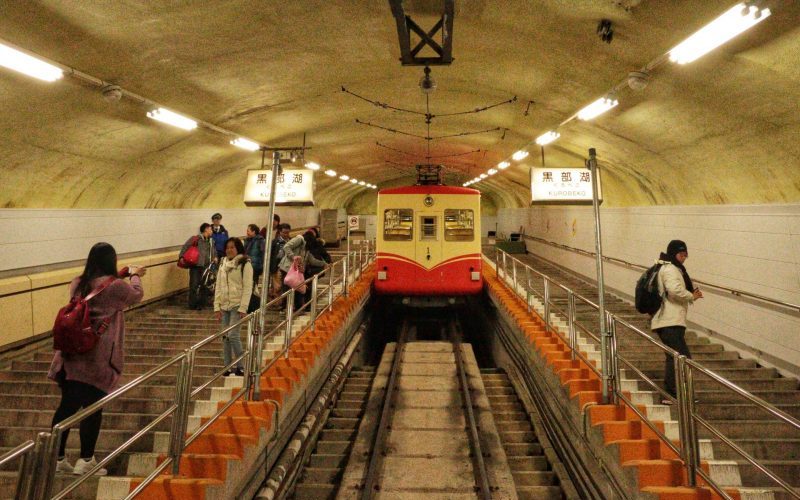
After a short break, we jumped on the Kurobe cable car from Kurobedaira to Kurobeko station. The Kurobe cablecar is Japan’s only underground cable car. It runs entirely inside the tunnel without impact by the snowfall. The journey takes about five minutes.
Kurobe Dam
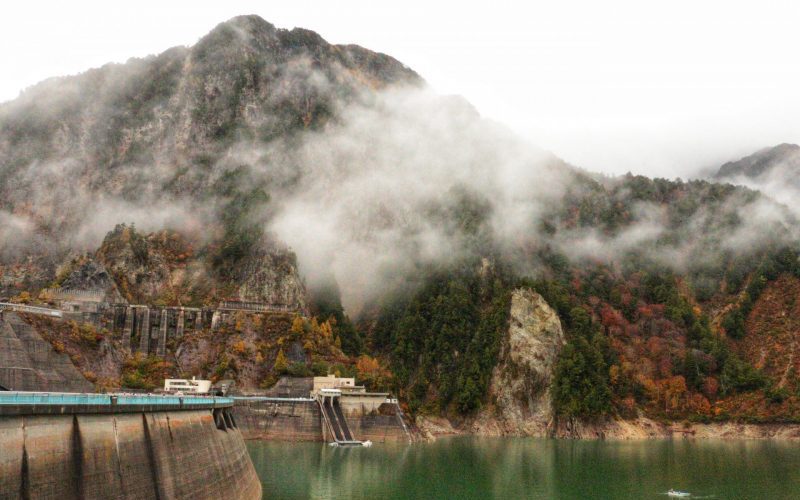
The Kurobe Dam is nearly the end of the Tateyama Kurobe Alpine Route. We spend about 2 hours and wandering around at Kurobe Dam. Our visit was the season for fall foliage. We had a beautiful view with autumn vibrant leaves on the scenic mountain together with Kurobe lake.
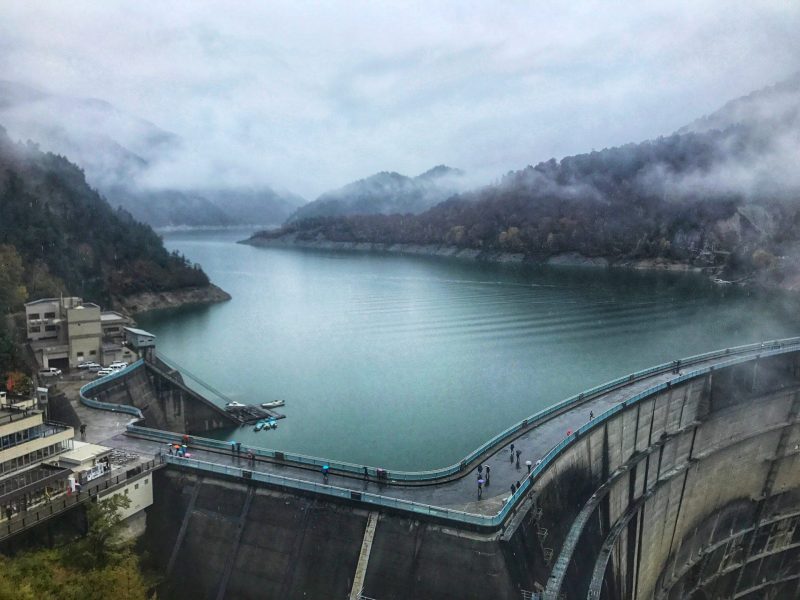
We cross the spectacular Kurobe Dam and admire the beauty of the dam along the walk.
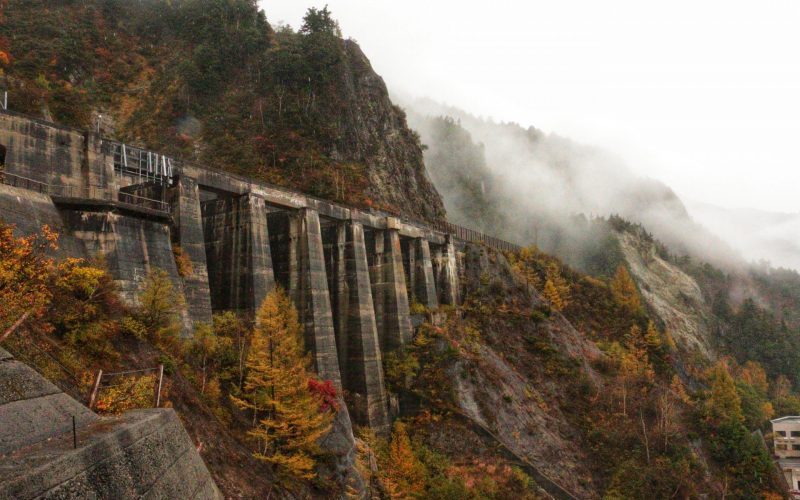
Added, we wandering around and climbed up the 220 long flight of stairs to Observation Deck. It is the best place to view on Kurobe Dam from above. There is a rest house where you can take some rest and try on Dam curry.
Next, we proceed to take the Kanden tunnel electric bus to Ogizawa. From there, we transferred to the local bus and back to Shinano Omachi.
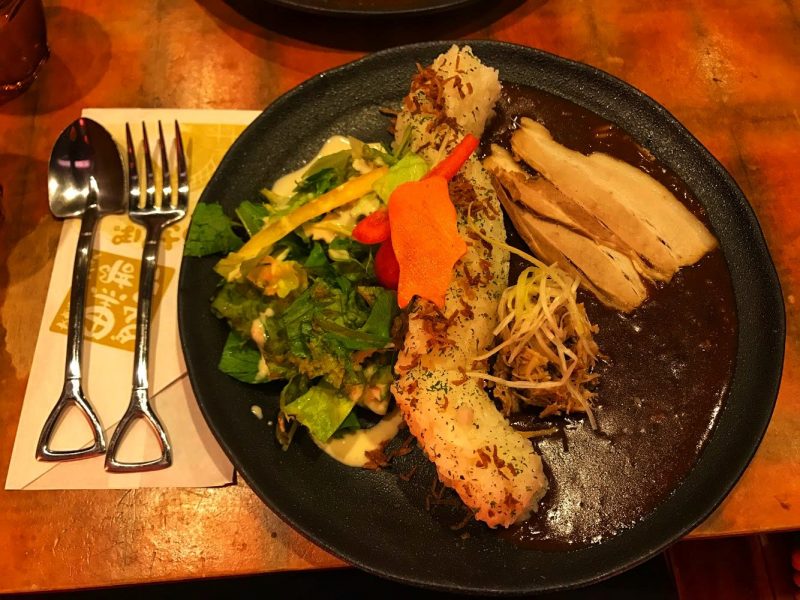
Once we reached Shinano Omachi, we were almost relieved from the transportation arrangement in Tateyama Kurobe Alpine Route. The JR Oita Line runs between Shinano-Omachi and Matsumoto with about one train per hour until about 10 pm. So we choose to dinner and try the Kurobe Dam Curry at one of the restaurant nearby station before proceeding to Matsumoto.
All in all, the full Tateyama Kurobe Alpine Route took us about 9 hours. An early start from Toyama and end at Shinano Omachi in late evening. It was a full gear day and exhausted at the end of the day.
Teteyama Transportation Guide
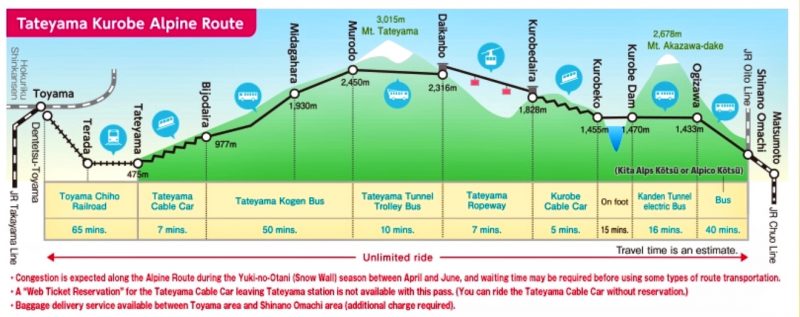
Always, transportation is the biggest concern for most of the travelers for Alpine Route. But no worry. All the transport is incredibly well organized with signs in Japanese and English showing you the way at each station. So it is very easy even for non-Japanese travelers.
Don’t be confused by the variety of transport modes. It is simple and well connected along the journey. You may need to wait during the peak season, especially at the ropeway. But overall, we didn’t find it is difficult for us. The whole Alpine Route is divided into nine sections, each with different transport modes and walking distances.
Here is the full transport guide on Tateyama Kurobe Alpine Route.
- Train from Dentetsu-Toyama To Tateyama (60 minutes, ¥620)
- Cable car from Tateyama to Bijodaira (7 minutes, ¥930)
- Bus from Bijodaira to Murodo (50 minutes, ¥1240)
- Option to stop at Midagahara
- Trolleybus from Murodo to Daikanbo (10 min)
- Ropeway from Daikanbo to Kurobedaira (7 min, ¥2200)
- Cable car from Kurobedaira to Kurobe Dam (5 min)
- Trolleybus from Kurobe Dam to Ogizawa (16 min, ¥790)
- Bus from Ogizawa to Shinano-Omachi (40 min, ¥1390)
- Local train/bus from Shinano-Omachi to Matsumoto/other destination
Planning Transport Along the Alpine Route
We stayed in Toyama and Matsumoto before and after the Alpine Route to ease on transport and luggage arrangement. Both places are very convenient and well connected with the JR train. We spend about half-day at each city to visit the city sights.
All in all, the full route of the Alpine route approximates cost about ¥12,000. The Alpine Route Pass greatly save us on the transportation fee. If your Chubu travel itinerary is similar to us, we highly recommended you to get one for this trip.
For JR Pass user, unfortunately, JR Pass is not covered for this route. But you can still get the discounted Tateyama Kurobe Option Ticket to save on some money.
Baggage Delivery
To ease your travel, there are baggage delivery services between Toyama and Shinano-Omachi Station. Dropped off and picked up places are Dentetsu Toyama train station and “Alps Roman Kan” in Shinano-Omachi Station. The dropped in is between 8:00 morning to 11:00 morning. No reservation required. Baggage forwarding tag will be given and you can pick up at designated place after 15:00 until 20:00.
Depending on the size and the location. The cost per bag can be up ¥3,000 for one way. It might be slightly expensive. But it worth the money as you can travel leisurely. Most importantly, no big baggage is permitted along the Alpine Route.
However, we would like to start our trip earlier so that we can spend more time on Alpine route without worrying about pick up time. After consideration, we choose to have our luggage delivered directly from the hotel to the next hotel stay. There is few hotel provided the luggage delivery service. All luggage delivery services are required to pay in advance for each luggage transported.
Where To Stay
The best place to stay while doing the Alpine Route is to stay at one of the hotels along the route. We stayed in Comfort Hotel Toyama before our way to Tateyama Kurobe Alpine Route adventure. It is conveniently located nearby the Toyama station within 3 minutes walking distance. Most importantly, it provides the baggage delivery service for Alpine Route. Charges depend on luggage size.
When we reached Matsumoto, we stayed in Ace Inn Matsumoto. It is a standard business hotel without anything to wow for. But the location is the big winning point.
There are few hotels also doing the same delivery service. Check it out if you need to look for accommodation for the Alpine route.
– Daiwa Roynet Hotel Toyama-Ekimae (2-min walk to Toyama Station)
– Toyama Excel Hotel Tokyu (3-min bus trip from Toyama Station)
Accommodation in Alpine Route
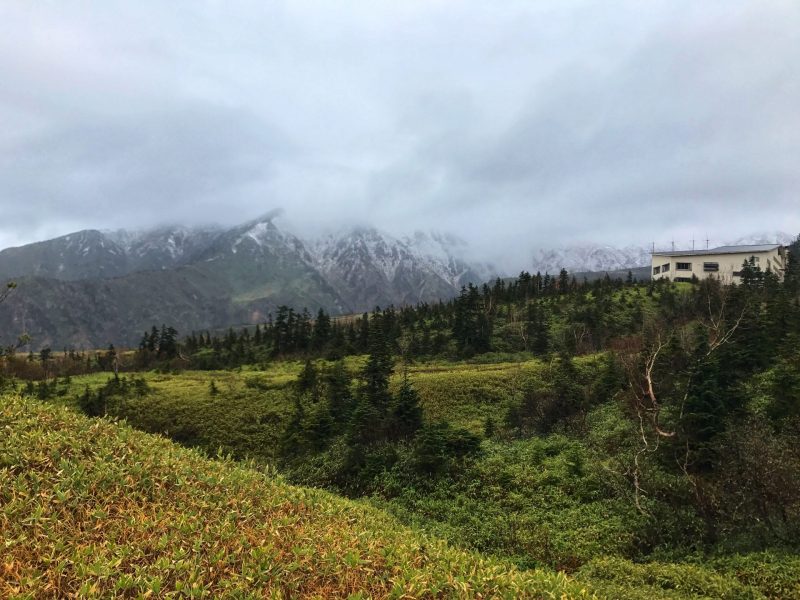
The Alpine Route trip takes about 8 hours to complete the full route. If you prefer for more leisure travel or hiking, consider staying at the top. There are few accommodations available for your lovely stay in the mountain top. Please make sure to reserve earlier as it may run out especially peak season.
We recommended Hotel Tateyama which located at Murodo, the highest point of the Alpine Route. You stay featured with a marvelous mountainous scenic view. Spend time hiking, sightseeing or even enjoy Japan’s highest onsen (hot spring). Staying at the top of the mountain must be a unique experience.. (Check Hotel Tateyama Rate here)
Another best traveler’s choice is Midagahara Hotel. It is one of the best places to stay in Alpine Route. You can spend time to explore the hiking trail in Midagahara area. Make sure to book for the half-board stay. Midagahara Hotel served the traditional Japanese and Western dinner for hotel guests. (Check Midagahara Hotel rate)
Tateyama Alpine Route Travel Tips
If possible, please start earlier in the morning. The full route of Alpine route takes about 8 hours. Tateyama Kurobe Alpine route is an extremely popular attraction among locals and foreigners. Don’t be surprised by tons of visitors come for the majestic snow corridor. Expected to wait for transport connection especially for the peak hour.
Delivery services are required as no big baggage is permitted along Alpine Route. You can drop off and picked up your luggage at the start point/endpoint of the Alpine route. While the cost of luggage delivery is not cheap. But it definitely worth the money. It is even ideal to stay in the hotel which can help to deliver your luggage to the next hotel stay.
Most people are travel to Alpine Route in one way, either from westbound or eastbound. Some people choose to travel on a round trip due to limited time. This is a popular option from Toyama to Murodo when the Snow Wall just opened. However, a round trip required higher fares, and JR Pass holder with discounted option ticket combined is not offered.
Various attractions and each station led to different natural. It is very easy to plan for a short or long hike along the Alpine route. But it is good to plan the length of the visit to each attraction. The last transport will end in the evening. It can be very troublesome if you fail to board the last transport. You can always refer to the website for the timetable.
Different waiting lines for direct and stop midpoint for Tateyama Togen Highland Bus which run between Bijodaira Station and Murodo. If you choose to stop halfway, for example, Midagahara Wetlands. Please make sure to book your next bus at the bus station. The bus won’t stop without reservation.
Do take note of the bus schedule especially the last bus leaves from Ogizawa to Shinano-Omachi or Nagano.
All in all, here is the summarised on Tateyama Kurobe Alpine Route Travel Tips:
- Start earlier in the morning
- No big luggage is permitted
- Trave in one way either from westbound or eastbound. A round trip required higher fares.
- Plan the length of visit at each attraction
- Take note on the bus schedule and waiting line
My Final Tateyama Kurobe Travel Tips
It takes about 6-7 hours pass through the Alpine Route for one way; either from Tateyama Station to Ogizawa Station or Ogizawa Station to Tateyama Station.
The Snow Corridor opening period is the best time and most popular to visit the Tateyama Alpine Route. It is only open for two months a year, starting from April with the highest and slowly melts until disappears in June.
Unfortunately, JR Pass does not include Alpine Route. But given the option to get the discounted ticket for a one-way Tateyama Kurobe (Alpine route) Option Ticket combined which cost an additional 9,800 yen.
Lastly, if you are visiting Tateyama Kurobe Alpine Route during the Snow Wall Opening period, please expected a large crowd and the wait time can be longer. Many travelers from local and overseas are flocking into the Murodo Station for the magnificent Snow Corridor.
Alpine Route Transportation Pass
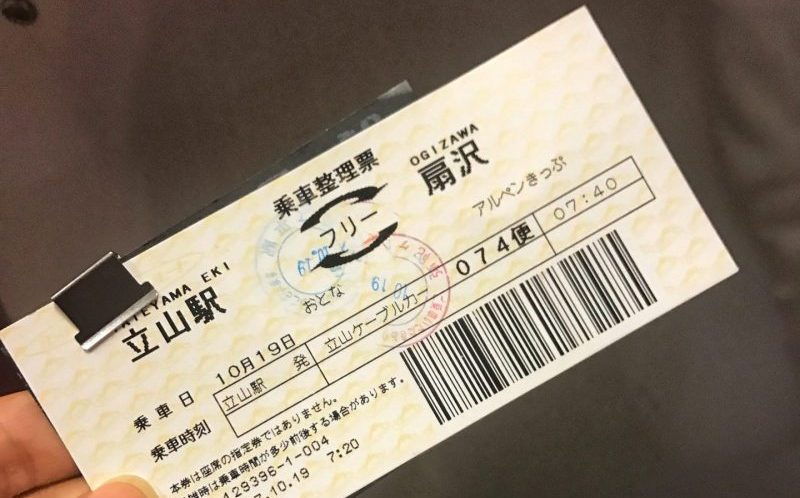
There are various Japan Travel Pass available for foreign visitors. Depend on your Japan itinerary. The Whole Japan JR Pass is a good option for those who plan to travel to Tokyo, Kyoto, and Hokkaido. There are also JR East and JR West Pass if you love to explore the specific region.
Keep in mind that most of the JR Pass including JR East, JR West, or Whole Japan JR Pass is not include for Alpine Route. But travelers are giving the option to get the discounted ticket for a one way Tateyama Kurobe (Alpine route) Option Ticket combined. The Option Ticket cost an additional 9,800 yen. You need to pay for this option ticket instead of buying the ticket separately.
Travelers are planning to visit the Chubu region together Alpine route. The Alpine-Takayama-Matsumoto Area Tourist Pass ¥17,830 is the best transport pass for you. You can plan on travel on from either direction between Toyama and Nagano/Shinano-Omagi Station. This pass can easily be extended your trip to nearby attractions for your Chubu travel itinerary.
Tateyama Kurobe Alpine Route
A journey going up to Tateyama Kurobe Alpine Route was a spectacular journey. We experienced the snow at Muroko and Autumn foliage at Midagahara and grand Kurobe Dam. It was unique for experiencing both seasons within one day. The view was so breathtaking and I wish I could come for different seasons. Probably the majestic Snow Wall for my next visit.
We enjoy venturing our trip to the mountain scenery. It is a MUST VISIT if you are in the Chubu region. We highly recommend the Tateyama Kurobe Alpine Route!
Last but not least, hopefully, Tateyama Kurobe Alpine Route Travel Guide can give you some idea for your itinerary planning. Below are travel blog posts on Midagahara, Murodo, and Kurobe dam to explain more detail on each attraction.
- Complete Tateyama Kurobe Alpine Route (Travel Guide + Itinerary)
- Midagahara: A Short Walk in Alpine Wetland
- Murodo: Highest Point in Tateyama Kurobe Alpine Route
- Kurobe Dam: Must Visit Attraction in Alpine Route
Next, please feel free to read on my Chubu travel story to Nagoya, Takayama, Shirakawago, Kanazawa, and more:
- Nagoya Itinerary: A Guide For Things To Do in Nagoya
- Where To Stay in Nagoya: The Best Hotels and Areas
- Takayama Itinerary: What To Do and Eat in Takayama
- Where to Stay in Takayama: Best Hotel or Traditional Ryokan?
- Shirakawago Itinerary: A Walk Into Cultural Japan Village
- Kamikochi Itinerary: One Day Hike in Japan Alps
- Kanazawa Itinerary And Travel Guide: Things To Do in Kanazawa
Traveling within the Chubu region:
